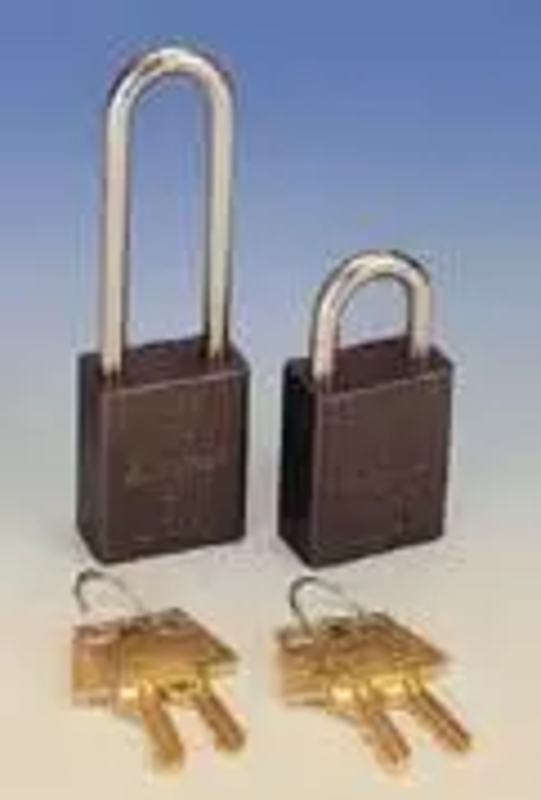What is a Padlock?

Purpose of a Padlock
Padlocks are external, portable locks that can be placed
in most locations, versus the traditional stationary lock, such as the type
that is built in to a door. Padlocks are also different in another regard: they
were designed specifically in order to protect against vandalism, defacement,
or any of type of forced entry. They are typically used to protect the contents
of storage units, such as sheds, but are very widely used for safety purposes
as well, such as for keeping employees out of potentially dangerous areas.
Brief History of Padlocks
Padlocks are believed to have originated some time between
the 5th and 3rd centuries BCE and the first empirical
evidence suggesting their usage dates to the Roman Era, yet other forms of
padlocks have been found in the Jorvik Viking settlement in York, England
dating back to approximately 850 BCE.
Padlock Components
The main components of a padlock are its body, which is
the base of the lock, the locking mechanism, which is located inside the body,
and the shackle, which is the usually curved metal rod that inserts into the
body and clasps into the locking mechanism.
The Body
The body is the strongest part of the lock and can withstand the most amount of pressure and abuse. As the size of the body increases the diameter of the shackle and locking mechanism can also increase; larger padlock bodies can also allow for thicker metal, which makes for stronger locks. The body as well varies in width and is typically measured in millimeters, coming in 30, 50, 70 and larger variations. Padlock quality is determined by body width not solely due to the obviousness that width equals durability, but due to the fact that a larger body can hold more pins, therefore making the lock harder to pick.The Locking Mechanism
The locking mechanism is usually composed of a range of three to seven small spring loaded pins located inside the padlock body. The mechanism works when a key is inserted into the body, aligns the pins and allows the mechanism to release the shackle. Padlocks typically use pin-tumbler locks. A pin-tumbler lock is a lock in which the grooves on a key align with the wards, or pattern, inside the body, allowing for the release of the shackle from the padlock body.The Shackle
In most padlocks the shackle is typically shaped like the letter “u” and is the most-exposed part of the padlock. Therefore, any attempt to break or destroy a padlock is achieved through the destruction of the shackle itself, which is why the shackle is arguably the most important part of the lock. As the diameter of the shackle increases the lock becomes more difficult to sever and the typical shackle diameter is 1/4 of an inch, although they vary in size in accordance with purpose. Most shackles are made of bronze or stainless steel.
Types of Padlocks
Brass, Aluminum and Anodized Aluminum
Brass is ideal for locks that come into prolonged or
constant contact with the elements and are therefore better for outdoor use,
such as sheds, gates and gardens or any scenario where the locks are bound to
get wet. Aluminum padlocks also provide protection against caustic or corrosive
environments but are lighter weight. They can also be color-coded.
Anodized aluminum  is aluminum that has been put through an electrolytic passivation process. In
this process an aluminum object, in this case the lock body, acts as a positive
electrode (or anode) while a direct current is passed through an electrolytic
solution. During the process, the current discharges oxygen on the surface of
the aluminum, which coats the lock body in a layer of aluminum oxide. The layer
of aluminum oxide is resistant against corrosion and as well is a better
surface for paint primers, which is why color-coated padlocks are typically
anodized.
is aluminum that has been put through an electrolytic passivation process. In
this process an aluminum object, in this case the lock body, acts as a positive
electrode (or anode) while a direct current is passed through an electrolytic
solution. During the process, the current discharges oxygen on the surface of
the aluminum, which coats the lock body in a layer of aluminum oxide. The layer
of aluminum oxide is resistant against corrosion and as well is a better
surface for paint primers, which is why color-coated padlocks are typically
anodized.
The Key to Locks
There are three typical options when buying or manufacturing padlocks: keyed alike, keyed differently and master keyed.
Keyed Alike – Keyed alike refers to the creation of a source key, or one individual key that is used on all of locks. The same key cannot be used across manufacturer lines as different manufacturers do not use the same locks.
Keyed Differently – Keyed differently refers to a set of keys all of which are different and therefore each is used to operate a particular lock.
Master Keyed – Master keyed can be seen as the crossing point between the keyed alike and keyed differently options. A master keyed lock is a lock for which a group of people each has their own key, but where one master key exists which can open every lock.